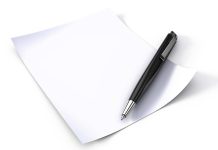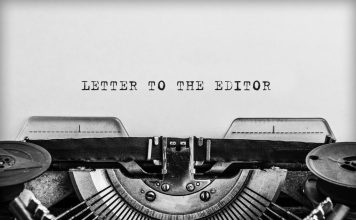There’s no longer any doubt about it: Hanging chads were far,
far better than what could ensue if California Secretary of State
Bruce McPherson this spring certifies the two most common brands of
electronic voting machines for use in this year’s elections and
many more to come.
There’s no longer any doubt about it: Hanging chads were far, far better than what could ensue if California Secretary of State Bruce McPherson this spring certifies the two most common brands of electronic voting machines for use in this year’s elections and many more to come.
Hanging chads, of course, were the tiny pieces of cardboard that sometimes refused to drop off when voters used punch cards to express electoral choices. There were common everywhere in America until the aftermath of the 2000 election, when enough chads were left hanging in Florida to determine the outcome of a presidential election.
Since that time, chads and the cards from which they can hang have become dinosaurs. Electronic machines from optical scans to touch screens have superceded punch-card voting. For all the new machines, state rules now require a paper record of each vote which can be checked by the voter, but is kept by county officials for use in case of a recount.
In the changeover to more sophisticated machines, two brands became dominant, both through marketing and competitive bidding. Those brands are Diebold, whose machines are now used in 17 California counties – even though the Diebold TSx, one of the firm’s most popular and cost-effective models, still awaits California’s certification – and Elections Systems & Software (ES&S).
One positive note is that McPherson has not buckled under pressure to certify quickly from election officers in the many counties which bought Diebold hardware and the software to run it. That pressure comes because federal law requires new machines in place well before the June primary. Election officials don’t want to be forced to return to their respective county boards and report they’ve wasted millions of taxpayer dollars on unreliable voting machines. But McPherson punted the Diebold certification issue to federal testing officials and no one knows how long their tests will take or how thorough they will be.
And McPherson is not without fault in this. Just after Thanksgiving, he was scheduled to have an expert Finnish computer hacker test the California machines and see if he could alter voting results by manipulating software. That test was suddenly postponed with little explanation and has yet to occur.
In the meantime, the hacker, Harri Hursti, conducted a similar test on a very small scale in the Florida capital of Tallahassee. His trial involved eight votes cast on a Diebold machine. During the test, two “no” votes were cast on a make-believe ballot issue, and six for “yes.”
But Hursti had pre-programmed a Diebold memory card to produce an ultimate result of 7-1 for the yes side, no matter what the actual vote might be. And 7-1 yes was what the computerized machine ended up showing. So the hacker reversed the actual vote, getting into the memory card by using an agricultural scanning device available over the Internet.
The consequence: The local elections chief, Ion Sancho, replaced the Diebold machines with others from Diebold competitor ES&S.
Days later, Volusia County, Fla., which contains the city of Daytona Beach, also opted to ban Diebold machines. Then Missouri’s St. Louis County cancelled its order for Diebolds.
“These were sold as safe systems'” Sancho told a reporter. “They passed tests as safe systems. But … there is a way to rig an election. It’s not a bunch of guys stuffing ballots in a precinct. It’s possibly one person acting in secret changing thousands of votes in a second.”
That’s exactly what some fair-voting activists claim happened in Ohio in the last presidential election, when the outcome hinged on that state, one which Diebold founder and CEO Walden O’Dell pledged in a letter to Republican fundraisers to “bring in for Bush.”
No one knows whether he meant to do that by fair methods or by fixing his company’s machines. What is known is that Ohio went narrowly to Bush even as Democrats screamed about voting machine manipulations.
Also known is that O’Dell resigned from Diebold in December, just days before a securities fraud action in an Ohio federal court charged that the company’s “false and misleading statements served to conceal the dimensions and scope of internal problems at the company impacting product quality…”
Will McPherson consider all these factors in his now-delayed decision on whether Diebold machines can be used in California? When queried, he did not respond.
And why did he delay for six weeks disclosing there were also problems with ES&S machines in the November special election? No answer to that one, either.
For sure, most of this state’s county voting registrars don’t want anyone thinking about these things. Which makes them appear less concerned with the integrity and accuracy of elections than with how their county supervisor bosses will react to the possible waste of millions of dollars on corruptible voting machines.











